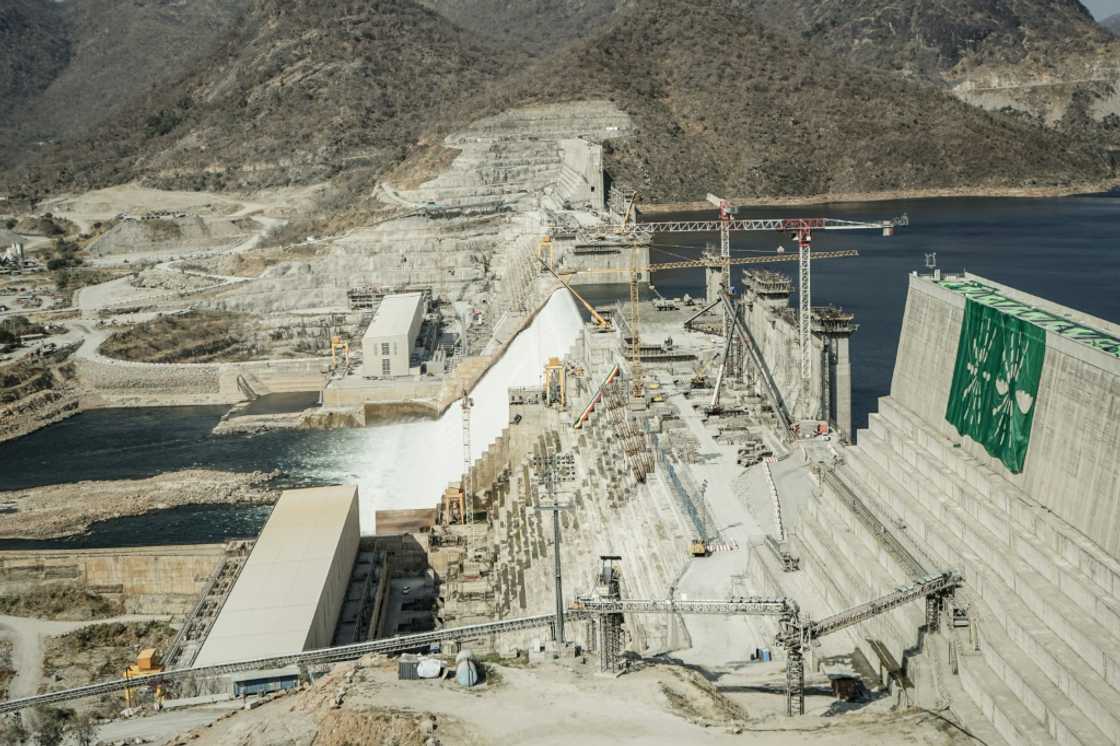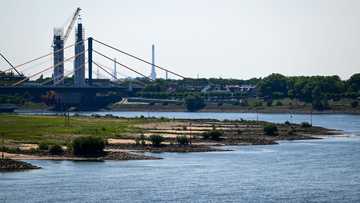Ethiopia's controversial mega-dam

Source: AFP
New feature: Check out news exactly for YOU ➡️ find “Recommended for you” block and enjoy!
Ethiopia's massive hydro-electric dam project on a tributary of the Nile has raised regional tensions notably with Egypt, which depends on the huge river for 97 percent of its water supply, and with Sudan.
Ethiopia said Friday it has completed the third filling of the mega-dam's reservoir, a development that could raise further tensions with its downstream neighbours.
10 countries
At 6,695 kilometres (4,160 miles), the Nile competes with the Amazon for the title of world's longest river. It is a crucial supplier of water and hydropower in a largely arid region.
Its drainage basin of more than three million square kilometres (1.16 million square miles) covers 10 countries: Burundi, Democratic Republic of Congo, Egypt, Ethiopia, Kenya, Rwanda, South Sudan, Sudan, Tanzania and Uganda.
The two main tributaries -- the White Nile and the Blue Nile -- converge in Khartoum before flowing north through Egypt and into the Mediterranean Sea.
PAY ATTENTION: Enjoy reading our stories? Join YEN.com.gh's Telegram channel for more!
Around 84 billion cubic metres of water is estimated to flow along the Nile every year.
Africa's biggest dam
Ethiopia in 2011 launched construction of the Grand Ethiopian Renaissance Dam (GERD), a 145-metre (475-foot) high structure which straddles the Blue Nile in the Benishangul-Gumuz region of western Ethiopia, roughly 30 kilometres (18 miles) from the border with Sudan.
The $4.2-billion dam will ultimately produce more than 5,000 megawatts of electricity, making it Africa's biggest hydroelectric dam and doubling Ethiopia's electricity output.
Ethiopia began the first phase of filling the vast reservoir in mid-2020.
The reservoir's total capacity is 74 billion cubic metres, of which it had reached 22 billion cubic metres by Friday.
Ethiopia first began generating electricity from the GERD in February. Currently, the two operational turbines, out of a total of 13, have a capacity to generate 750 megawatts of electricity.
Egyptian thirst
Egypt, an arid nation of nearly 100 million people, depends on the Nile for 97 percent of its water needs, including for agriculture.
Cairo claims a historic right to the river dating from a 1929 treaty between Egypt and Sudan, represented by colonial power Britain, that gave Egypt veto power over construction projects along the river.
A 1959 treaty boosted Egypt's allocation to around 66 percent of the river's flow, with 22 percent for Sudan.
Ethiopia was not party to those treaties and does not see them as valid.
In 2010 Nile basin countries, excluding Egypt and Sudan, signed another deal, the Cooperative Framework Agreement, that allows projects on the river without Cairo's agreement.
Failed talks
Ethiopia, one of Africa's fastest growing economies in recent years until war broke out in November 2020, insists the dam will not affect the onward flow of water.
But Egypt fears its supplies will be reduced during the time it takes to fill the reservoir.
Egypt considers the dam a threat to its existence and Sudan has warned millions of lives would be at "great risk" if Ethiopia unilaterally filled the dam.
Talks sponsored by the African Union have failed to yield a three-way agreement on the dam's filling and operations.
The project was initiated under former prime minister Meles Zenawi, the Tigrayan leader who ruled Ethiopia for more than two decades until his death in 2012.
Regional tensions
Another source of regional tension is the conflict between the government and Tigrayan rebels since November 2020 in northern Ethiopia, which has sent tens of thousands of refugees fleeing across the border into Sudan.
Relations between Addis Ababa and Khartoum have also deteriorated because of a territorial conflict over the fertile Al-Fashaqa border region where Ethiopian farmers have long cultivated land claimed by Sudan.
There have been sporadic deadly clashes in the area.
New feature: Check out news exactly for YOU ➡️ find "Recommended for you" block and enjoy!
Source: AFP




